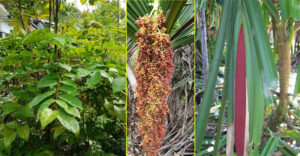
The Provincial Government (Pemprov) of West Papua is committed to maintaining Papua’s forest area by 70 percent. This is done as a form of West Papua’s contribution to achieving the national emission reduction target.
The current upward trend in global atmospheric temperatures has increased to 1 ° C, compared to before the industrial revolution. It is estimated that if the increase continues, then at the end of the 21st century later, the increase will increase to 3 ° C. Can humans all over the world deal with it?
Responding to this, the EcoNusa Foundation Program Director, Muhamad Farid, explained the importance of reducing greenhouse gas (GHG) volumes. Various scientific studies and reports revealed that, in 2018 the volume of GHGs has exceeded 400 parts per million (PPM).
According to Farid, temperatures in Russia reached 42 ° C, India almost touched 50 ° C and Indonesia reached minus 11 ° C (in Gunung Kidul). This is indeed in accordance with the predictions of experts from 40 countries who are members of the Intergovernmental Panel on Climate Change (IPCC). IPCC data states, if the GHG volume reaches 450 PPM, there will be a “small doomsday”. “So called, because it is accompanied by the phenomenon of increasing global heat that is uncertain with extreme weather,” explained Farid.
Protecting the forest is important to reduce this volume. Forests play an important role in this case, because it is a place to store and absorb carbon. One of the carbon absorbed is carbon dioxide (CO2) gas contained in GHG. Mineral forested land in Indonesia is estimated to store a minimum of 190 tons of carbon per hectare per year (Litbanghutt, KLHK, haruni et all, 2015). For peatland forests, the amount can reach 400 tons per hectare per year. This amount varies, depending on the depth of land.
The number of carbon stocks stored in primary forests remaining reaches 5.16 gigatons * very significantly maintained in meeting the target of reducing land sector emissions in 2030 by 497 million tons of CO2e (NDC 2017). This can be realized if forest conservation is carried out in total, by ignoring development in natural forests. In order to realize this, the EcoNusa Foundation in cooperation with the West Papua Provincial Government is pushing for a review of oil palm plantation licensing. This is important for tracking high-value concession areas in terms of conservation and carbon.
In areas that have obtained the permit, there are still land banks or lands that are still in the form of forests and have not been managed as plantation land even though they have obtained permits. This type of land is still very possible to be returned to its original function, as conservation land.
The permit review process will also target problematic forest management. If such findings are found, recommendations for revocation of licenses will be given. “Our goal is to remove the concession to save 500 thousand hectares of forest, which is equivalent to maintaining 95 thousand tons of carbon or 298.3 million tons of CO2e emissions per year or contributing 60 percent of the national land sector’s emissions reduction target,” concluded Farid.







